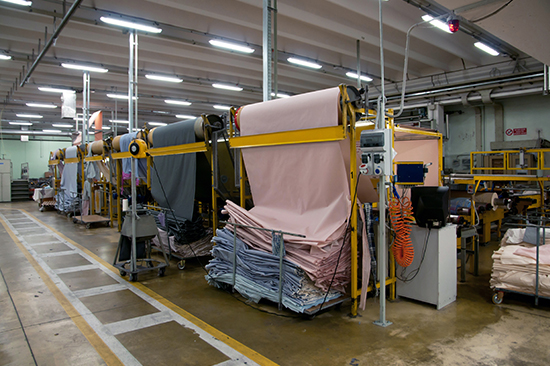Why invest in Zambia?

Over the last decade, Zambia has successfully turned the corner. Most evident is a commendable display of economic growth, improved prosperity and easier market access for local and foreign investments in the past decade. During this time Zambia attained economic growth above 5 percent spurred by the expansion of the country’s mining, construction and service industries.
With good governance and a vigorous pursuit of sound macroeconomic policies, Zambia’s macroeconomic environment is stable and considered to be the most favourable in the region with structural changes relating to investment and trade facilitation. All of which now culminate into the significant reduction in the cost of doing business.
Other key strengths that make Zambia an attractive investment destination include:
- An abundance of natural resources and manpower.
- Political stability since attaining its independence in 1964.
- The abolition of controls on: prices, interest rates, foreign exchange rates and free repatriation of debt repayments.
- 100% repatriation of net profits.
- International standard as well as a well-developed Stock Exchange.
- Double Taxation Agreements with a number of European, North American, African and Asian countries.
- The establishment of Multi Facility Economic Zones (MFEZs).
- The acquisition of land by foreign entities facilitated by the Zambia Development Agency.
- Market Access: Zambia is party to several regional and international trade and economic groupings. At the regional level, Zambia belongs to the Common Market for Eastern and Southern Africa (COMESA) and the Southern Africa Development Community (SADC). This implies that Zambia has access to both the COMESA market, which has a combined population of 492.5 million and a GDP of USD 657.4 billion, and the SADC market, which has a combined population of 293 million consumers and a GDP of US$700 billion.
At the international level, Zambia is a beneficiary of preferential trade arrangements under various strategic economic partnerships e.g. with the USA, under the Africa Growth Opportunity Act (AGOA); China, under the Forum for China Africa Cooperation (FOCAC); Japan, under the Tokyo International Conference for Africa’s Development (TICAD); India, under the India-Africa Forum (IAF) and Canada under the Global Market Action Plan (GMAP), among others. Zambia is also party to the Cotonou agreement and has benefited from duty-free, quota-free market access for the European market under the Generalized System of Preference (GSP) and the Everything But Arms (EBA) arrangement.
Investment Opportunities
The Zambian Government is committed to diversifying the economy away from the mining sector while increasing the number of Public Private Partnerships (PPPs), improving the country’s infrastructure and public sector delivery. The PPP Act was enforced in August 2009 under which the Government also encourages and accepts unsolicited bids from investors in any area of investment in all aspects of the economy.
In addition, the Government seeks strategic partners in various projects in ICT, telecommunications, roads and rail, power generation, tourism, waste management and water supply.
Mining
The Zambian Government is committed to diversifying the economy away from the mining sector while increasing the number of Public Private Partnerships (PPPs), improving the country’s infrastructure and public sector delivery. The PPP Act was enforced in August 2009 under which the Government also encourages and accepts unsolicited bids from investors in any area of investment in all aspects of the economy.
In addition, the Government seeks strategic partners in various projects in ICT, telecommunications, roads and rail, power generation, tourism, waste management and water supply.

Agriculture

Zambia has 752,000 square kilometres of land mass, 58 percent which is arable. Currently, however, on 14 percent of the arable land is under cultivation indicating the potential for further development in this area. New farming blocks have been opened in order to attract in both local and international investors to use already surveyed land for cultivation and agro-business.
Among the non-traditional crops with potential which have also been prioritised for investments include cotton, coffee, tobacco, sugarcanes, pineapples, cashnuts, cassava, and other horticultural and floricultural crops. There are opportunities to engage in agro-processing and move-up the value chain.
Agriculture is predominately rain fed and therefore, the sector’s performance is most determined by rain pattern. The irrigation potential is estimated at 430,000 hectares of which only 100,000 is currently developed. With an estimated 45 percent of the total water resources in Southern Africa, Zambia has massive irrigation farming potential.
Agro Processing
Government realizes that agriculture alone is not enough to bring about meaningful development to the Zambian people and therefore recognizes the need to diversify from primary agriculture into agro processing. The agro processing sector in Zambia generally is one of the most important sectors that have experienced unprecedented growth in terms of production and export performance in recent years. This has been closely attributed to huge investment inflows in the various value chains as well as the enabling business environment.
Agro processing investment opportunities in Zambia include, but are not limited to the following:
- Peanut butter production;
- Cashew nut processing;
- Animal or Stock feed production (soya beans);
- Cassava Processing (food and other industrial products);
- Grain Milling (Rice, Maize, Wheat etc.);
- Edible oil Production;
- Fruit Canning and Juice Extraction;
- Meat, dairy, leather and leather products;
- Fish canning and fish meal production;
- Cotton Spinning and Textiles;
- Bio-diesel production and ethanol production; and
- Honey processing.

Energy
Zambia’s energy sources include; electricity, petroleum, coal, biomass, and renewable energy. It is only petroleum which is wholly imported in the country, while the country is basically self-sufficient in all the other energy resources. The demand for the most important energy source, electricity, in the country has been growing at an average of about 3 percent per annum mainly due to the increased economic activity in the country and the region.
Investment opportunities in the energy sector in include: electricity generation, petroleum, coal, and renewable energies.
Electricity
Hydro power is the most important energy source in the country after wood fuel contributing about 10 percent to the national energy supply and is generated by three major hydroelectric power stations. It is estimated that Zambia has about 40 percent of the water resources in the Southern African Development Community, thereby enabling the country to have about 6,000 MW of hydropower potential. Of this, only about 2, 434.3 MW has been installed but the demand for electricity has continued to grow rapidly. Zambia and the SADC region has been facing power deficit since 2007 and 73 power generation projects are required to increase generation from the current 56,000 MW and surpass projected demand of 96,000MW by 2027.
Investment Opportunities in the power sector include:
- Electricity Generation, hydro and coal and Transmission;
- Establishment of Renewable, solar, and other energy facilities;
- Production of solar system components;
- Setting up isolated grid; and
- Sale of solar panels and related accessories.

Petroleum
Petroleum contributes about nine (9) percent to Zambia’s total energy requirements. There has been a significant increase in the consumption of petroleum products in the recent years. For instance, the national consumption of diesel grew from an average 1,500,000 litres per day in 2007 to about 2,700,000 in 2015.The current demand for petroleum products in the country is around 231 million litres per month.
Investment opportunities exist in the petroleum industry, which include upstream and downstream petroleum projects.
Recent exploration work for petroleum covering parts of North-Western, Western and Eastern Provinces of Zambia, using the Microbial Prospecting for Oil and Gas technique, have indicated that the Okavango and North Luangwa basins have potential for oil and gas. Government has tendered the oil blocks for oil and gas prospecting.
The Downstream petroleum sector in Zambia has a deficit in bulk storage of petroleum products. In order to address this situation, the government is looking towards engaging a strategic partner to construct a 50 million litres Petroleum Terminal in Lusaka, the capital City of Zambia, on a Build Operate and Transfer (BOT) basis.
To sustain its economic growth, Zambia needs to upgrade its infrastructure. To this effect, Government’s focus is on construction, rehabilitation and maintenance of physical infrastructure in the following areas: roads and bridges, railways, airports and aerodromes and maritime and inland waterways.

Airports
The country recently adopted an “open sky policy” and is currently promoting the establishment of an air cargo hub for the Southern African region. In this regard, the Government has embarked on a program to improve the infrastructure at all the international airports in collaboration with the private sector.
This has therefore provided investment opportunities in the following areas:
- Construction of runways, terminals and auxiliary facilities in and around the airports such as hotels, shopping malls, Conference facilities etc.
- Scope for private sector participation in development of airports also exists in the identified airfield in six (6) separate projects in Chipata, Kitwe, Kasama, Mongu, Solwezi and Mansa.

Roads
The Government of Zambia embarked on the Link Zambia 8,000 project (Accelerated National Roads Construction Programme) aimed at rehabilitating and constructing the road network linking Zambia to Angola, Botswana, Democratic Republic of Congo, Malawi, Mozambique, Namibia, Tanzania and Zimbabwe. This priority government project envisions building 8000 km of quality single and dual lane roads throughout the country.
The Link Zambia 8000 Project is expected to last at least five – eight years, starting 2013, and is estimated to cost over $5 billion. The government has proposed private sector companies to consider undertaking the construction of key toll roads which will carry the bulk of commercial traffic and could be built and operated on a sustainable revenue model.
These priority toll routes comprise the backbone of Zambia’s national road network including:
- Solwezi to Kazungula (with a spur to Kasumbalesa);
- Kapiri Mposhi to Nakonde; and
- Lusaka to Mchinji via Chipata.
Railways
The Government intends to expand its railway network in the country to bolster the surface transport sector. The development of rail routes linking important exit points is not only vital for facilitating smooth access to the outside world but also for the overall boosting of trade in the sub-region and making Zambia a competitive country for doing business. Government is seeking private sector participation in the development and rehabilitation of the railway infrastructure.
Some of the opportunities include the following:
- Chingola to Jimbe (Border with Angola): The railway line involves linking the existing line in Chingola through Solwezi to the border town of Jimbe in Angola;
- Kafue (Zambia) – Zawi (Zimbabwe): The railway line will link Zambia Railway line to the Beira Port via Ziwa Zimbabwe as the shortest route to the port of Beira in Mozambique;
- TAZARA Nseluka – Mpulungu port: The railway lines involves linking Mpulungu Port to TAZARA line at Nseluka to facilitate the imports and exports from the Great Lakes region to the sea ports on the Indian Ocean;
- Extension of the Mchinji/Chipata Railway line to TAZARA: The railway line involves linking the Chipata–Mchinji line through Petauke District to the port of Nacala in Mozambique.
- Railway link with Zambia and Namibia (Livingstone –Sesheke): The construction of this line involves the partial rehabilitation of the Mulobezi line and feasibility studies for construction of a spur between Livingstone and Katima Mulilo via Kazungula and connecting to the Nambian Railway System at (Border) as part of the Walvis Bay – Livingstone – Lusaka – Ndola – Lubumbashi Corridor.
Manufacturing sector
The manufacturing sector in Zambia accounts for about 7.7% of the country’s Gross Domestic Product (GDP) and has been growing at an average annual growth rate of 3% in the last five years (since 2011). Growth in the sector is largely driven by the agro processing (food and beverages), textiles and leather subsectors. Secondary processing of metals is another main activity in the sector, including the smelting and refining of copper and related metal products. Production of fertilizers, chemicals, explosives and construction materials, wood and paper products are examples of activities in this sector.
Given that the manufacturing sector is of vital importance to the country’s economic growth, the Zambian government has put in place measures to support manufacturing activities, such as the establishment of Multi-Facility Economic Zones (MFEZs) and Industrial Parks and provision of sector-specific investment incentives.
The priority areas for investment in the manufacturing sector include; food processing, textiles and clothing, mineral processing, chemical products, engineering, leathering, electronics, pharmaceuticals and packaging products.

Housing and Estate Infrastructure
Zambia has been facing a shortage of housing units, especially in rapidly growing towns and districts of the Copperbelt and North Western provinces where mining activities have resurged. The establishment of a new province and districts has further bolstered an increase in the housing demand in these areas. Government estimates suggests a backlog of 2 million units across the country, and recommends an annual delivery rate of 200 000 units to meet demand in the next 10 years. However, the housing sector in Zambia is largely driven by individual and private sector initiatives. In order to address the current housing deficit, Government has created an enabling environment for the provision affordable, quality and adequate housing to the majority of Zambians.
Opportunities in the housing and estate development sector include:
- Zambia through the Ministry of Commerce, Trade and Industry is seeking development partners to jointly finance, re-design and re-develop the trade fair grounds into a modern exhibition, entertainment and business centre which can be used as Zambia’s main business exhibition and trade centre;
- Public-Private Partnerships (PPPs) in the housing development and construction of auxiliary facilities;
- Development of modern cluster –style housing with commercial and social amenities;
- Development of commercial properties including business parks, shopping malls, office blocks etc;
- Development of social infrastructure such as construction and development of schools, health facilities and other public infrastructure services; and
- Development of Multi-Facility Economic Zones and industrial parks.
Trade

Zambia is a competitive source of the following products.
- Copper Wire
- Cane Sugar
- Burley Tobacco
- Cotton Lint
- Electrical Cables
- Fresh Flowers
- Fresh Fruits & Vegetables
- Gemstones
- Handcrafts & Curios
- Leather & Leather Products
- Wood Products
- Building Materials
- Maize & Maize Seed
- Wheat & Meslin
- Cement & Lime
- Nickel
- Copper
- Gold
- Manganese
Helpful Resources
Zambia Trade Portal Link
Zambia Investment Guide
Zambia Tourism Investment Guide
